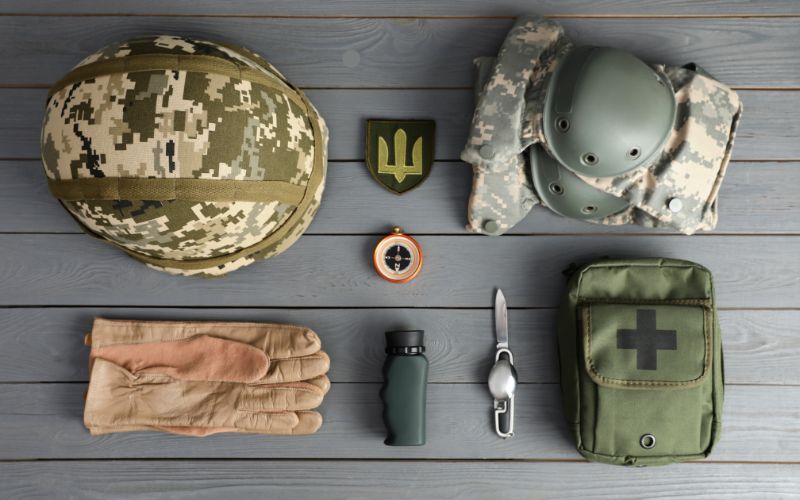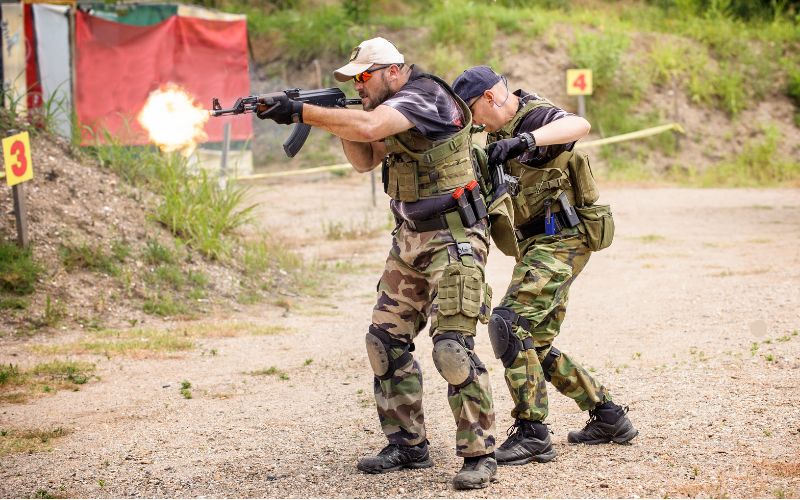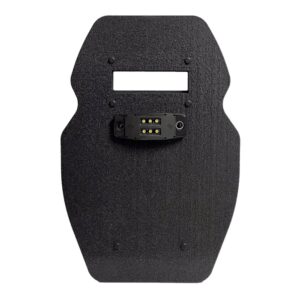Differences Between MOLLE And PALS

Two acronyms frequently pop up regarding tactical gear: MOLLE (Modular Lightweight Load-carrying Equipment) and PALS (Pouch Attachment Ladder System). Both are essential in modern military, law enforcement, and outdoor activities, yet they are often confused with one another. Understanding the distinctions between MOLLE and PALS and how they work together can significantly affect how you organize and use your gear in the field. In this article, we’ll dive into the differences between these two systems and how each contributes to your loadout.
What Is MOLLE?

MOLLE (pronounced “Molly”) stands for Modular Lightweight Load-carrying Equipment. Introduced by the U.S. military in the late 1990s, it revolutionized how soldiers carry gear. MOLLE refers to the entire load-bearing system, which includes backpacks, tactical vests, mag pouches, and other equipment. The beauty of the MOLLE system is its modularity. Users can attach and rearrange different pouches, tools, and other gear components to their base platform, customizing their setup based on mission requirements.
Key Features of MOLLE
- Modularity: The MOLLE system allows users to add or remove pouches, such as a radio pouch, shotgun shell pouch, dump pouch, and other attachments, based on need.
- Customizability: The gear can be tailored for specific tasks, such as military operations, hiking, or hunting.
- Durability: MOLLE gear is designed for rough use and is made from high-quality materials like Cordura fabric, which is abrasion-resistant and water-resistant.
- Compatibility: MOLLE systems can be used across various platforms, from backpacks to body armor and tactical vests.
Disadvantages Of MOLLE
- Complicated Setup: Though MOLLE is highly flexible and customizable, it can be difficult to set up, particularly for inexperienced people. Learning to attach and readjust gear, whether in malice clips or something else, may take time. Under pressure situations, readjusting gear could prove to be a hassle.
- Weight and Bulk: MOLLE equipment can be cumbersome, particularly when heavily accessorized. The equipment and the webbing could add weight to the pack or vest, which can be complicated or uncomfortable, especially in long-duration operations or trekking.
What Is PALS?
PALS, or the Pouch Attachment Ladder System, is a grid of webbing that allows MOLLE-compatible gear to be attached to any MOLLE-equipped surface. Often confused with MOLLE itself, PALS is the framework or infrastructure behind the modularity of MOLLE gear. The horizontal rows of stitched webbing you see on backpacks, tactical vests, and other tactical gear stuff are the PALS system.
Key Features of PALS
- Grid Layout: The webbing on PALS gear is arranged in a grid-like pattern, typically 1 inch wide and spaced 1 inch apart. This is what allows for versatile attachment configurations.
- Attachment Points: The webbing serves as loops where users can weave straps, cords, or buckles to secure MOLLE-compatible accessories.
- Strength: The reinforced stitching in PALS ensures that attachments remain secure, even under the stress of heavy loads.
- Standardization: PALS webbing follows strict specifications, ensuring compatibility across manufacturers and gear items.
Cons of PALS
- Limited Attachment Options: Although PALS works well as a webbing system, it does not attach gear itself and instead depends upon external means of attachment, such as malice clips or straps. This limited ability to attach may not be the best in all situations, particularly in hurried or tactical roles where speed counts.
- Frequent-Use Durability Issues: Over time, the PALS webbing will wear and tear under unfavorable conditions. Habitual use of malice clips and constant attachment/detachment of equipment may destabilize the stitching and fabric of the webbing, affecting its long-term durability.
How MOLLE and PALS Work Together

While MOLLE is the broader system that includes all kinds of gear, PALS is the essential webbing grid that makes MOLLE attachments possible. Think of MOLLE as the overall concept of modularity and customization, while PALS is the technology or method that allows this concept to come to life.
Here’s how they work together:
- PALS Webbing as the Foundation: The PALS webbing provides the attachment points. This grid of loops is found on backpacks, tactical vests, and belts.
- MOLLE Attachments: The pouches, holsters, or accessories you want to attach are part of the MOLLE system. These components have straps, clips, or cords designed to weave through the PALS webbing.
- Weaving Process: To secure an accessory, the straps on MOLLE gear are woven in and out of the PALS webbing, creating a tight bond that ensures the attachment won’t come loose easily.
- Versatility: This weaving system allows you to attach multiple pieces of gear in various configurations, depending on your needs.
The interplay of these two systems creates an efficient and reliable way to carry essential tactical tools without compromising on speed, flexibility, or durability.
The Differences Between MOLLE and PALS
Although MOLLE and PALS are interconnected, they are not the same thing. The distinction is subtle but important, especially when discussing gear compatibility and functionality.
1. Functionality
- MOLLE: MOLLE refers to the entire modular load-bearing system, encompassing the platform and the various pouches, bags, and accessories.
- PALS: PALS, on the other hand, is the specific system of webbing that allows MOLLE gear to be attached to different surfaces. Without PALS, MOLLE gear wouldn’t have the versatile attachment points it’s known for.
2. Role in Customization
- MOLLE: The MOLLE system’s strength lies in its wide array of attachments and accessories, from magazine pouches to medical kits. The modular design allows you to configure your gear to suit your mission.
- PALS: PALS is a standardized attachment mechanism. The foundation makes customization possible but doesn’t offer customization by itself.
3. Development History
- MOLLE: The U.S. Army developed MOLLE to replace the older ALICE (All-purpose Lightweight Individual Carrying Equipment) system. It has been adopted by various military forces worldwide.
- PALS: While integral to MOLLE, PALS was initially designed separately. Its use in the MOLLE system solidified its place as the standard for tactical gear attachment.
4. Compatibility
- MOLLE: MOLLE systems are designed to be compatible across various platforms. Whether you’re attaching gear to a vest, tactical backpack, or belt, the MOLLE system ensures everything stays in place.
- PALS: PALS webbing is universal across MOLLE platforms, ensuring cross-compatibility among manufacturers and equipment. This standardization is what makes PALS so effective in tactical gear.
How To Use MOLLE and PALS Correctly
Understanding how to use MOLLE and PALS properly is crucial for maximizing the functionality of your gear. Here’s a step-by-step guide to attaching MOLLE pouches to PALS webbing:
- Choose Your Gear: Select the MOLLE pouch or accessory you want to attach to your PALS-equipped gear.
- Align the PALS Webbing: Line up the straps on your MOLLE accessory with the PALS webbing on your platform (backpack, vest, etc.).
- Weave the Straps: Begin weaving the attachment straps in and out of the PALS webbing, ensuring a tight and secure fit. This creates a strong bond between the accessory and the platform.
- Secure the Attachment: Once fully woven, use snaps, buckles, or Velcro to secure the straps. Make sure everything is tight to prevent movement during use.
- Test the Attachment: Before heading out, test the stability of your attachment by tugging on the accessory. It should feel secure and immovable.
Why MOLLE and PALS are Important for Tactical Gear

MOLLE and PALS are fundamental in providing the flexibility, strength, and durability that modern tactical gear requires. Here’s why they matter:
- Mission-Specific Loadouts: MOLLE allows you to tailor your gear to the specific task at hand, whether you’re in a combat zone, on a hike, or working in law enforcement.
- Durability: The PALS webbing system ensures that your attachments stay secure even under tough conditions, offering reliability when it matters most.
- Compatibility Across Gear: Whether you mix and match brands or stick to one manufacturer, PALS ensures your MOLLE-compatible gear will work seamlessly together.
Conclusion
The MOLLE and PALS systems have become indispensable for anyone who requires a customizable, modular approach to carrying gear. While MOLLE encompasses the broader concept of modular gear, PALS is the webbing infrastructure that makes this modularity possible. Together, they create a versatile, durable, and efficient method for organizing and carrying tactical equipment.
Frequently Asked Questions
Can I use MOLLE gear without PALS webbing?
No, MOLLE gear relies on the PALS webbing system for attachment. Without PALS, there would be nowhere to attach MOLLE-compatible pouches or accessories.
Is PALS webbing exclusive to military gear?
While PALS webbing was initially developed for military use, it’s now widely used in civilian applications such as hiking, hunting, and law enforcement.
Are all MOLLE and PALS systems compatible across brands?
Yes, PALS webbing is standardized, so MOLLE-compatible gear from different manufacturers should work together if they follow the same specifications.
Why is MOLLE more adaptable than PALS?
MOLLE is more adaptable as it incorporates PALS webbing and offers additional methods for attaching gear, such as malice clips. Users can adapt the system according to their requirements with its modular approach. This integration makes it easy for individuals to customize and reconfigure their setup, making it more flexible for different scenarios.
Is it possible to use PALS without MOLLE?
PALS is the fundamental design of the MOLLE system. Although you could technically use PALS webbing independently, without MOLLE’s organization and attachment methods, you would lose the efficiency and versatility of the full system. The Malice clips and other accessories, available through MOLLE, significantly enhance its functionality and integration, making it much more useful for tactical applications.


